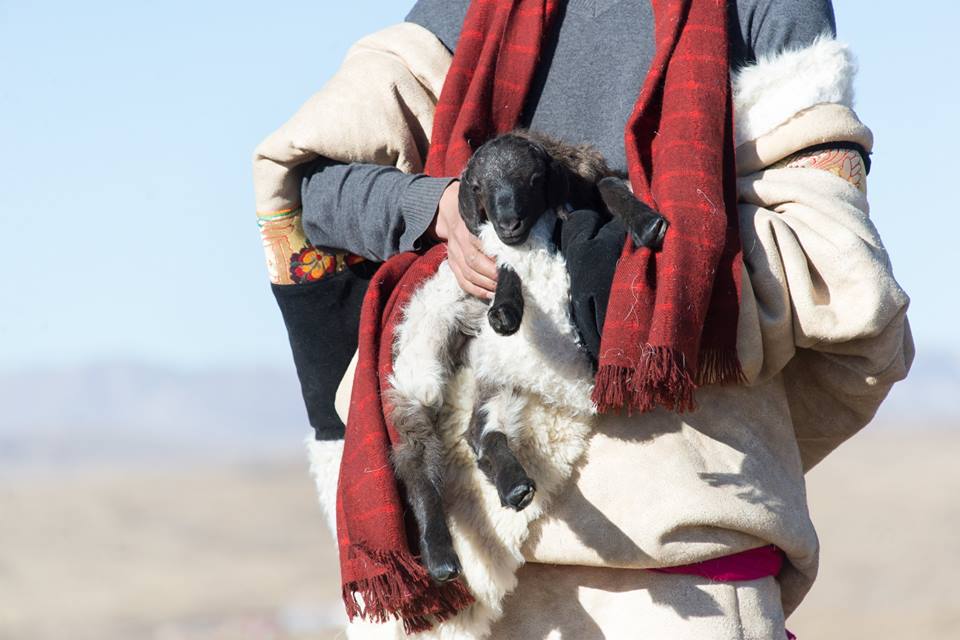BABIES IN SPRING
|
In spring, the wind is bitter, animals are exhausted, unsatisfied by the oat supplements and scrounging for grass that is no longer or not yet there. This last phase before life returns to the Plateau is a letdown from the purity of the gold, blue and white winters imbued with stillness and frozen beauty. Still, the first signs of a change are welcome, and they appear before the pasture begins to shift from brown to a tentative shade of the lightest green. Animals don’t wait for grass or warmth to give birth. Lambs are born early in the winter when the ewes have had their fill of the autumn grass. Yekos, or baby yaks are born in March, at the beginning of Spring, protected by the soft layer of down like khullu they will keep until their first molt, the following summer. Then there are the foals, the puppies and the piglets. In April, the marmots emerge from their holes following hibernation, filling the pasture with their shrill cries. The adults are thin and stand watch on their hind legs while the babies can be seen playing and chasing each other. These first signs of life are comforting, bringing promise for the rest to come. |






















